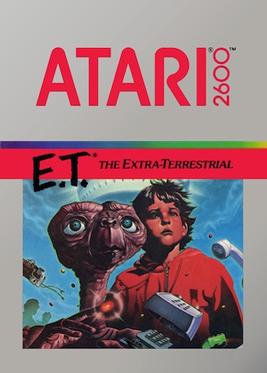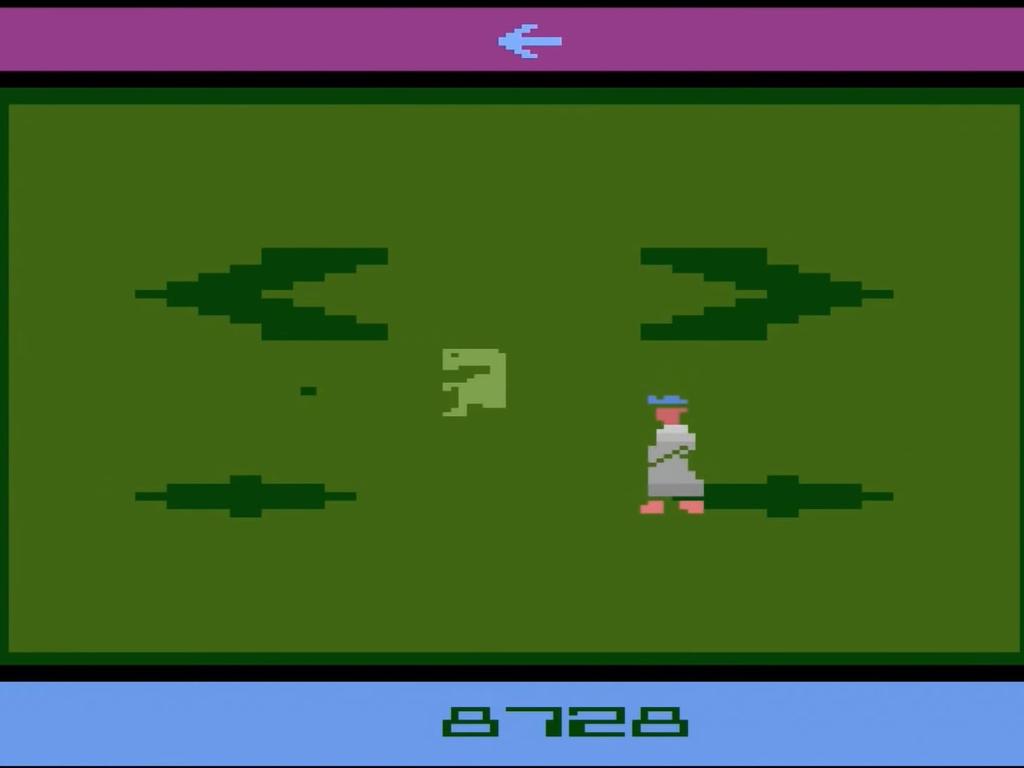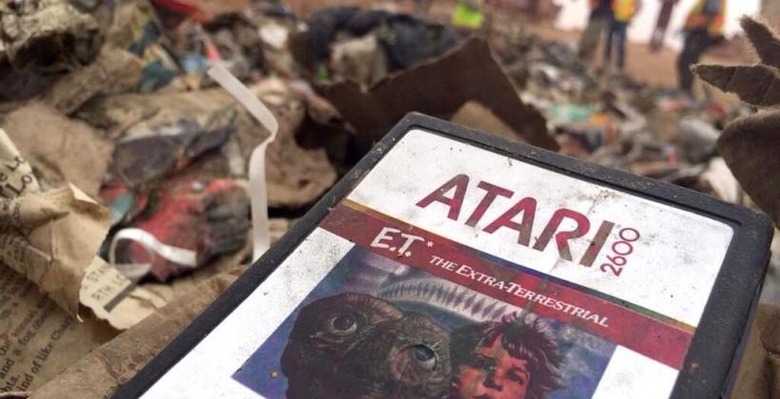GAME CLEAR No. 109 -- E.T. the Extra-Terrestrial
video games game clear atari atari 2600E.T. the Extra-Terrestrial (1982, Atari 2600)
Developer: Howard Scott Warshaw
Publisher: Atari
Clear Date: 11/2/22
Clear Version: “Fixed” version by David Richardson
Clear Platform: MiSTer FPGA

Be good.
Folks, I’m gonna get right to the point here and say that E.T. for 2600 isn’t that bad, and it certainly isn’t the worst game of all time. Sure, I played a fixed version, but I dabbled enough in the original version afterward to feel confident saying that it’s okay too.
And let me be clear: I’m not breaking now ground or being contrarian by saying this. Here’s a piece defending it retrospectively, and here’s one that dives into contemporary reviews of the game that, while certainly not overwhelmingly positive, do not foretell of a game that would one day be considered the worst ever. The deep dive into the fixed version of the game that I linked above also defends the game before explaining the ways it fixes some of the justified complaints about the game (in exceptional technical detail).
Of course, the game didn’t get its negative reputation for nothing. For starters, the object of the game is pretty inscrutable without a manual. The defense for that, of course, is that that was pretty common at the time. If you read it, you’ll discover that the object of the game is to gather three phone parts so E.T. can phone home and be retrieved by his people. Scientists and the FBI will try to kidnap E.T., but Elliott will do his best to help. Simple enough and at least vaguely aligns with the plot of the film!

However, even if you know what you’re doing, the game can still be pretty annoying. The phone parts are found in “wells” (pits, really) scattered across four of the game’s six screens. I rewatched the movie immediately prior to playing this game and it gave me no insight into why the hell they’re in wells. Nevertheless, they are.
And these wells constitute the game’s greatest source of frustration. In short, if any part of the E.T. sprite touches any part of the well sprite, E.T. falls in. Players naturally only expect this to happen when E.T.’s feet touch some part of the well, causing lots of accidents. It doesn’t help that screen space is already at a premium on 2600, so this means E.T. really has to thread the needle while running away from the enemy NPCs lest some pretty severe annonyance set in. The coup de grâce, however, is that performing literally any action in the game (including moving) consumes E.T.’s precious energy. If he runs out, he dies. Thus, any accidental misstep brings “Game Over” that much closer. That sucks.
But I can forgive a lot of that knowing that lone developer Howard Scott Warshaw had just five weeks to make the game. I’d like to think that if he’d had even a little more time, he might’ve made something a lot closer to the more polished end result David Richardson came up with.
Richardson’s hack eliminates the game’s most annoying issues and allows players to navigate a less burdensome game that’s actually pretty fascinating, especially by the standards of the time. It’s a cute little adventure game with a multi-part objective, enemies and allies, and several seconds of licensed music to boot! Once I figured it out, I can honestly say I had fun.
If nothing else, it’s a charming undertaking to try and patch up one of the most maligned games in history.

Frankly, though, even absent a fix, E.T. the Extra-Terrestrial is sort of just obviously not the worst game of all time. A quick glance at the new releases page on any major digital storefront will quickly reveal heaping piles of utterly egregious shovelware. E.T. was just a rushed, high-profile release with some major issues. It’s a great jumping-off point to talk about Atari’s questionable business decisions at the time and the North American video game market bubble, but it’s simply not that bad.
Maybe it’s not that interesting or important of a distinction to make. Maybe it’s just semantics. But to me, since launching a game digitally has gotten so comparatively easy in the past decade, you can’t meaningfully make a “Worst Video Games of All Time” list anymore. The barrier to entry is such that the bottom of the barrel is now just some unknowable mass of horrible asset flips and unplayable messes. “Most Disappointing” or “Biggest Flops” are far more interesting lists. An argument could be made for E.T. to make either of those, but the days when the number of mass-market, publically available games was meaningfully finite has long-since passed. We are in the infinite garbage era.
On the other hand, the industry has also exploded since 1982, and games come out at a pace that no one can reasonably keep up with. AAA games these days are lengthy (and often padded) affairs that can take months for a busy adult to set aside the time to finish. Meanwhile, the positive side of the aforementioned modern ease of publishing is that there are also countless great indie games being released all the time. To me — someone so obsessed with knowing about games and playing games and thinking about games that I started this blog series cataloging every one I beat — it’s kind of harrowing.
Or maybe it’s freeing. Why play the new AAA darling God of War Ragnarök when I could just poke around in E.T.? I’ll never be able to get around to everything anyway.
For better or worse, that’s the state of the industry. Unlike E.T., we can’t go home again.